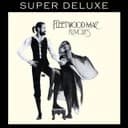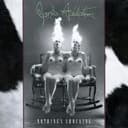D Lydian follows the interval formula W-W-W-H-W-W-H, producing the notes D-E-F♯-G♯-A-B-C♯-D. The defining characteristic is the raised fourth degree (G♯) which distinguishes it from D Major that contains G natural. This single note alteration creates a dramatically brighter, more mysterious sound while preserving major tonality. The scale contains the intervals: root, major 2nd, major 3rd, augmented 4th (tritone), perfect 5th, major 6th, and major 7th. This interval structure creates what music theorists call the "Lydian sound"—a dreamy, floating quality that seems to suspend time and lift the listener upward, making it the brightest of all seven major scale modes.
Relationship to A Major and the Lydian Character
As the fourth mode of A Major, D Lydian shares the exact same notes (three sharps: F♯, C♯, G♯) but emphasizes D as the tonal center. This relationship to A Major allows musicians to think "A Major from D to D," making modal visualization straightforward. The raised fourth (G♯) is the secret ingredient that transforms ordinary major tonality into something transcendent—this augmented fourth interval creates harmonic tension that never demands resolution, producing Lydian's characteristic ethereal quality. Film composers exploit this sound extensively in scenes requiring wonder, magic, or otherworldly beauty. The Lydian mode appears brighter than D Major and vastly more optimistic than modes like D Dorian or D Phrygian, establishing it as the ultimate "bright" mode.
Lydian's Use in Film Scores, Jazz, and Progressive Rock
D Lydian achieved prominence through its extensive use in film music, where composers like John Williams, Jerry Goldsmith, and Danny Elfman employ it to evoke fantasy, flight, and magical transformation. The Simpsons theme song features prominent Lydian flourishes, while Star Wars' "Flying Theme" showcases Lydian's soaring quality. In jazz, Lydian became essential through bebop and post-bop eras—musicians discovered that playing Lydian over major seventh chords (#11) created sophisticated harmonic colors unavailable in standard major scales. Progressive rock bands like Yes, Dream Theater, and King Crimson embraced D Lydian for its unconventional, adventurous sound that aligned with their experimental aesthetic. The characteristic I-II progression (D-E major) exploits the raised fourth, creating the unmistakable Lydian vibe that sounds simultaneously familiar and alien.
Practical Applications and Chord Progressions in D Lydian
D Lydian generates seven diatonic chords, but the most characteristic are D major, E major, and F♯ minor—the I-II progression (D-E) immediately establishes Lydian tonality. Jazz musicians play D Lydian over Dmaj7(#11) chords, where the G♯ creates the sharp eleventh extension that defines modern jazz harmony. For improvisation, emphasize the raised fourth (G♯) in your melodies—landing on or approaching this note makes the Lydian character unmistakable. Practice playing D Lydian over static Dmaj7 harmony, letting the scale's natural brightness shine without harmonic motion. The mode's non-resolving quality makes it perfect for ambient, meditative music and extended modal vamps. Contemporary producers use D Lydian for electronic music requiring uplifting, progressive vibes, particularly in trance, progressive house, and cinematic EDM where the raised fourth adds harmonic interest without darkness.
Learning Tips and Mode Relationships
Begin by mastering D Major, then raise the fourth degree from G to G♯—this direct comparison helps you hear exactly what makes Lydian special. Practice identifying the Lydian sound by playing D major and D Lydian back-to-back, focusing on how G♯ transforms the entire character. The Simpsons theme is an excellent practical study piece that demonstrates Lydian in a memorable, accessible context. Since D Lydian is the fourth mode of A Major, you can also approach it by playing A Major starting and ending on D, which provides an alternative mental framework. Explore related Lydian modes like G Lydian (down a fifth) and A Lydian (up a fifth) to develop comprehensive Lydian vocabulary across different keys. For improvisation practice, create loops with Dmaj7(#11) chords and experiment with melodies that emphasize G♯—this hands-on approach internalizes the Lydian sound faster than pure scale practice. Understanding D Lydian opens doors to other modes and helps you recognize modal harmony in jazz, film scores, and progressive music across all genres.





